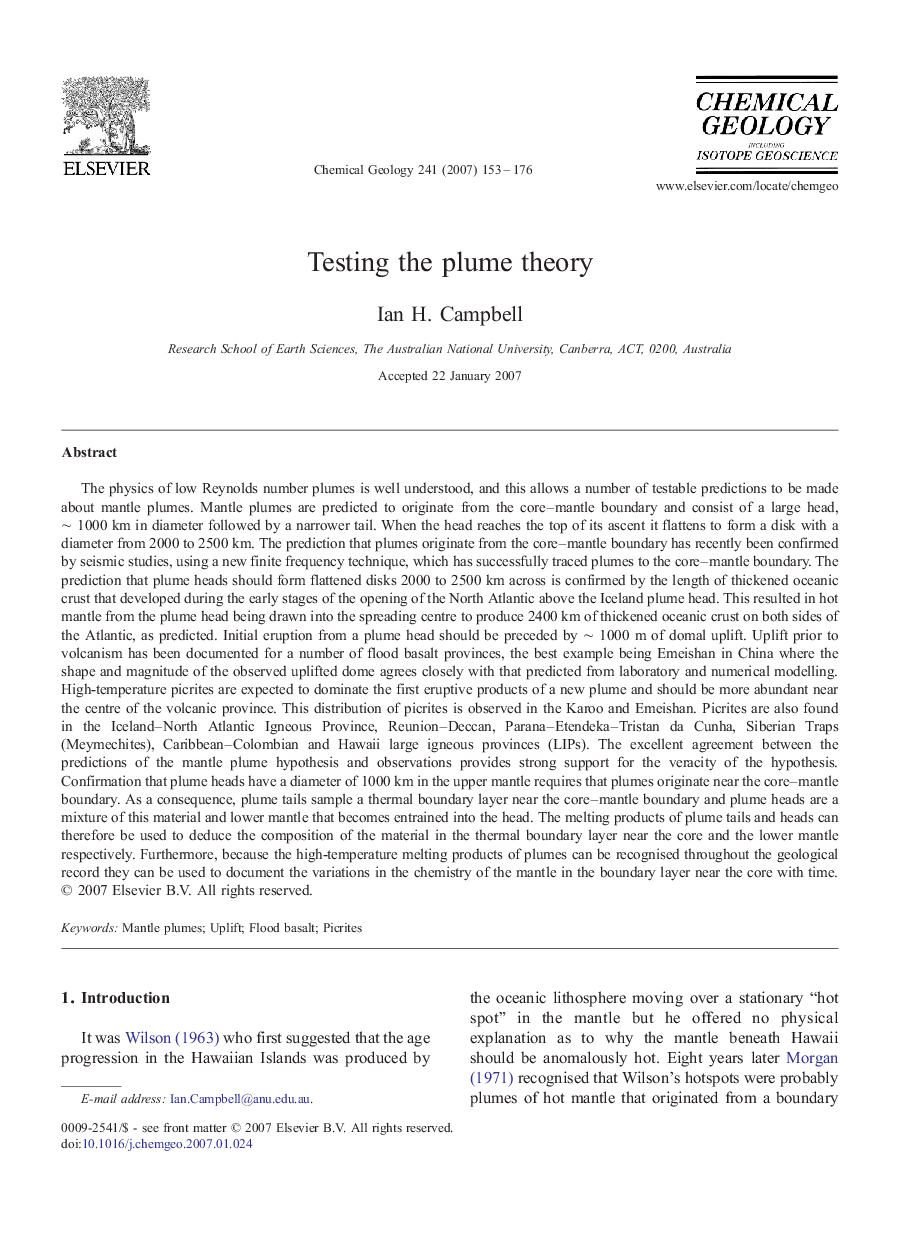| کد مقاله | کد نشریه | سال انتشار | مقاله انگلیسی | نسخه تمام متن |
|---|---|---|---|---|
| 4700850 | 1637747 | 2007 | 24 صفحه PDF | دانلود رایگان |

The physics of low Reynolds number plumes is well understood, and this allows a number of testable predictions to be made about mantle plumes. Mantle plumes are predicted to originate from the core–mantle boundary and consist of a large head, ∼ 1000 km in diameter followed by a narrower tail. When the head reaches the top of its ascent it flattens to form a disk with a diameter from 2000 to 2500 km. The prediction that plumes originate from the core–mantle boundary has recently been confirmed by seismic studies, using a new finite frequency technique, which has successfully traced plumes to the core–mantle boundary. The prediction that plume heads should form flattened disks 2000 to 2500 km across is confirmed by the length of thickened oceanic crust that developed during the early stages of the opening of the North Atlantic above the Iceland plume head. This resulted in hot mantle from the plume head being drawn into the spreading centre to produce 2400 km of thickened oceanic crust on both sides of the Atlantic, as predicted. Initial eruption from a plume head should be preceded by ∼ 1000 m of domal uplift. Uplift prior to volcanism has been documented for a number of flood basalt provinces, the best example being Emeishan in China where the shape and magnitude of the observed uplifted dome agrees closely with that predicted from laboratory and numerical modelling. High-temperature picrites are expected to dominate the first eruptive products of a new plume and should be more abundant near the centre of the volcanic province. This distribution of picrites is observed in the Karoo and Emeishan. Picrites are also found in the Iceland–North Atlantic Igneous Province, Reunion–Deccan, Parana–Etendeka–Tristan da Cunha, Siberian Traps (Meymechites), Caribbean–Colombian and Hawaii large igneous provinces (LIPs). The excellent agreement between the predictions of the mantle plume hypothesis and observations provides strong support for the veracity of the hypothesis. Confirmation that plume heads have a diameter of 1000 km in the upper mantle requires that plumes originate near the core–mantle boundary. As a consequence, plume tails sample a thermal boundary layer near the core–mantle boundary and plume heads are a mixture of this material and lower mantle that becomes entrained into the head. The melting products of plume tails and heads can therefore be used to deduce the composition of the material in the thermal boundary layer near the core and the lower mantle respectively. Furthermore, because the high-temperature melting products of plumes can be recognised throughout the geological record they can be used to document the variations in the chemistry of the mantle in the boundary layer near the core with time.
Journal: Chemical Geology - Volume 241, Issues 3–4, 15 July 2007, Pages 153–176